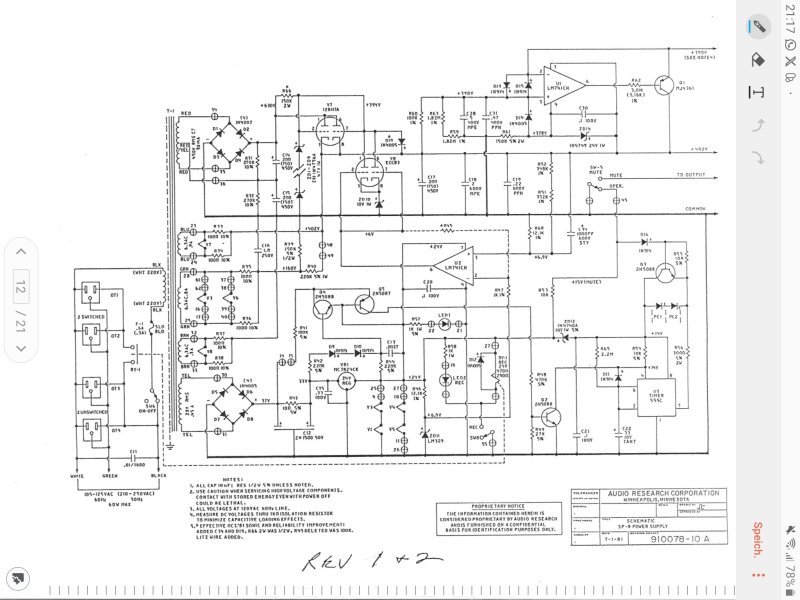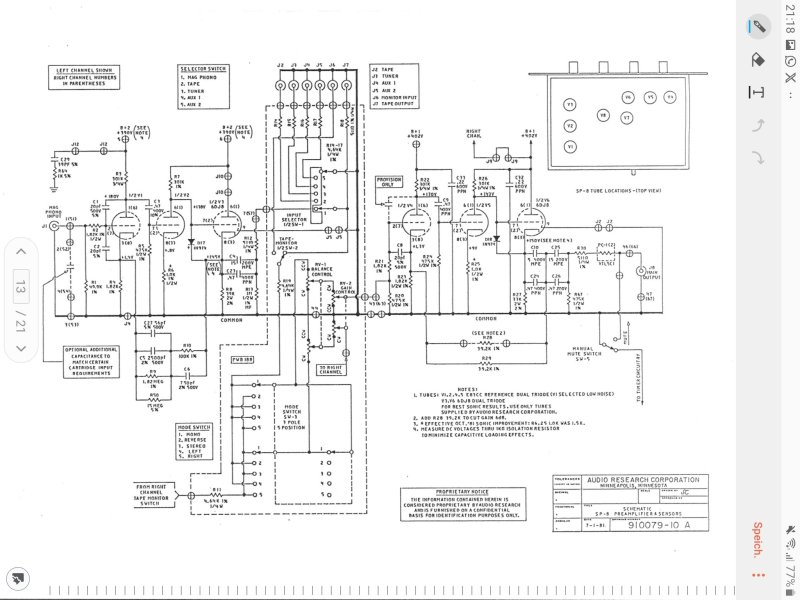Work gets in the way sometimes...
I tried a 24k 10W resistor across the Line stage HT and MM stage HT and the voltage after the zener stack rose to 349V, from around 335v.
Then moved to the having 24k 10W resistor in place and I added two ECC83s in positions V4, V5. The voltage after the zener stack rose to 360V Also, the voltages after V4 and V5's anode resistor
did not oscillate, they were fixed and steady at about 180V. That is a real step forward.
And finally I inserted the ECC88 into V6, the 24k 10W resistor still across the Line stage HT. The zener stack voltage rose to 390V. But now the after anode voltages around V4 and V5 began to oscillate, but by the 10V swing before, just by 5V.
Very strange....
I then found that after a couple of minutes of measuring the post anode voltages of V4 and V5 became stable. Though each time I touched pin 1 or pin 6 of either V4 or V5 the voltage would rise by 7V or so, then slowly settle back, under shooting and over shooting a little, and after 6 or 7 secs settling down to approximately the right voltage (190/187 for 1 and 6 for V4, 150/152V for 1 and 6 for V5).
Clearly this is different behaviour from the original fault of constantly wandering anode voltages, am I left with a measurement artefact of my Fluke 72? Note 4 of the schematic does instruct to measure all voltages through a 1k isolating resistor. And I did try measuring through a 1k resistor, but the results were the same. Is the SP-8's PSU so fragile that modern day DVM's resistance upset the regulation? Does the ECC88, V6, really shift the PSU to a state of fragility?
The acid test was to listen to a little music through it, 24k resistors removed, all the valves back in. That was quite disappointing. Lots of hash and hum mixed in with music. I did leaving it play for about 30 minutes, but there was no improvement. I also noticed a couple of splats and sploshes in the sound too, like before. So I seem to be no further forward...

I suppose the one bit of news is that the PSU appears to be regulating, maintaining voltages when the load goes up. It is almost like the valves are not pulling enough current for the top of the Zener stack to reach 390v, only with valves and the 24k resistors over the HT rails does the Zener stack voltage get to 390v....





